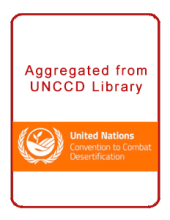Land Library
Welcome to the Land Portal Library. Explore our vast collection of open-access resources (over 74,000) including reports, journal articles, research papers, peer-reviewed publications, legal documents, videos and much more.
/ library resources
Showing items 1 through 9 of 37.This study aims to assess the applicability of the Voluntary Guidelines on the Responsible Governance of Tenure of Land, Fisheries and Forest in the Context of National Food Security (VGGT) in urban and peri-urban areas.
This publication is a practical guide to the Youth and Land Responsiveness Criteria, which is a tool that can be used to increase the incorporation of youth perspectives into land matters at both institutional and programme levels, through a participatory process.
This booklet arises from GLTN's work on Islamic dimensions of land which began in 2004 with the commissioning of research leading to Sait and Lim’s “Land, Law and Islam: Property and Human Rights in the Muslim World” (London: Zed Press/UN-Habitat, 2006).
This publication provides an overview of the findings of a review of land tenure security in Asia and the Pacific region in collaboration with key partners.
This report summarizes a case study of the Mexican ejidocommunity tenure system. Mexico was selected for this case study because of the rich history and extensive scale of the country’s community land tenure and registration systems.
The Feasibility Study is designed to provide a business case with respect to the feasibility of data collection for global land indicators.
The following recommendations are made in this report:
1. The continuum of land rights is a metaphor, not a theory. A metaphor can be applied in a number of theoretical contexts, whereas a theory has an ideological perspective.
In 2013, the International Land Coalition (ILC) marked a historic expansion in its membership, reaching 152 member organisations in 56 countries, representing diverse interests and entities from national civil society organisations (CSOs) and grassroots movements to international non-governmental
Forests cover nearly one-third of the world’s land area. They provide vital environmental services such as soil and water protection, regulate the climate and preserve biodiversity, produce valuable raw materials and food, and sustain the livelihoods of millions of people.









